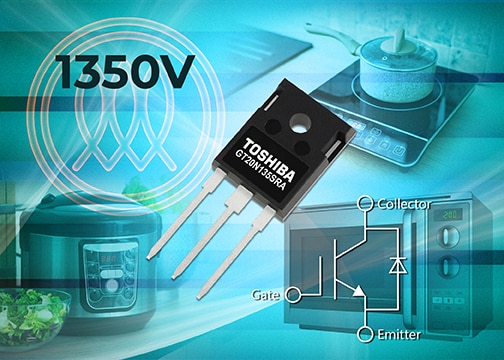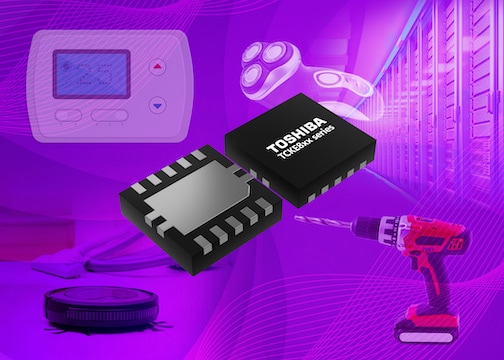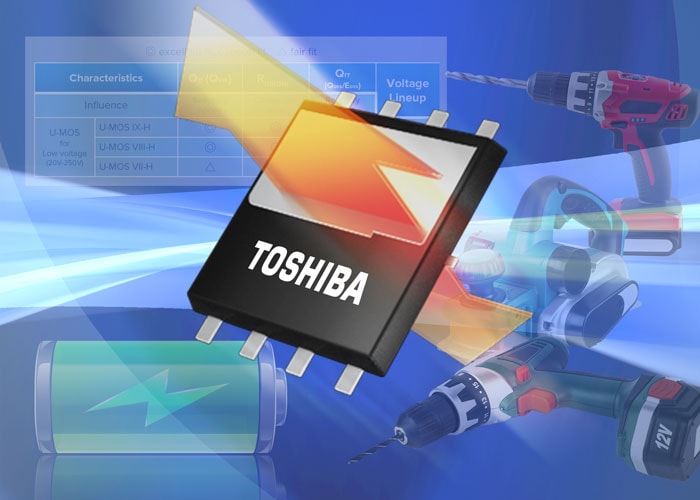- General Top
- SEMICONDUCTOR
- STORAGE
- COMPANY
-
My ToshibaSemicon
- Semiconductor Top
-
ApplicationsAutomotive
Body Electronics
xEV
In-Vehicle Infotainment
Advanced Driver-Assistance Systems (ADAS)
Chassis
IndustrialInfrastructure
BEMS/HEMS
Factory Automation
Commercial Equipment
Consumer/PersonalIoT Equipment
Healthcare
Wearable Device
Mobile
Computer Peripherals
-
ProductsAutomotive Devices
Discrete Semiconductor
Diodes
Transistors
Logic ICs
Analog Devices
Digital Devices
Wireless Devices
※
: Products list (parametric search)
Power SemiconductorsSiC Power Devices
※
: Products list (parametric search)
Isolators/Solid State RelaysPhotocouplers
Digital Isolators
Solid State Relays
Fiber Optic Transmitting Modules
※
: Products list (parametric search)
MOSFETsIGBTs/IEGTsBipolar Transistors※
: Products list (parametric search)
Diodes※
: Products list (parametric search)
MicrocontrollersMotor Driver ICsIntelligent Power ICs※
: Products list (parametric search)
Power Management ICsLinear ICs※
: Products list (parametric search)
General Purpose Logic ICsLinear Image SensorsOther Product ICsOther Product ICs
※
: Products list (parametric search)
-
Design & Development
Design & Development
Innovation Centre
At the Toshiba Innovation Centre we constantly strive to inspire you with our technologies and solutions. Discover how to place us at the heart of your innovations.
-
Knowledge
Knowledge
Highlighted Topics
Further Materials
Other
- Where To Buy
- Part Number & Keyword Search
- Cross Reference Search
- Parametric Search
- Stock Check & Purchase
This webpage doesn't work with Internet Explorer. Please use the latest version of Google Chrome, Microsoft Edge, Mozilla Firefox or Safari.
require 3 characters or more. Search for multiple part numbers fromhere.
The information presented in this cross reference is based on TOSHIBA's selection criteria and should be treated as a suggestion only. Please carefully review the latest versions of all relevant information on the TOSHIBA products, including without limitation data sheets and validate all operating parameters of the TOSHIBA products to ensure that the suggested TOSHIBA products are truly compatible with your design and application.Please note that this cross reference is based on TOSHIBA's estimate of compatibility with other manufacturers' products, based on other manufacturers' published data, at the time the data was collected.TOSHIBA is not responsible for any incorrect or incomplete information. Information is subject to change at any time without notice.
require 3 characters or more.
More Effective IGBT Soft Switching for Induction Cookers

Induction cooking offers greater convenience and safety to users, as well as being markedly more energy efficient. There are a wide range of domestic appliance manufacturers now offering cooker models of this kind, with strong uptake in both the residential and commercial sectors. Based on rising demand levels, the worldwide induction cooktop market is projected to reach several billion dollars by 2025, according to the most recent report from Global Info Research.
The principles of induction cooking are fairly simple to understand. The energized coils that are located under cooktop surfaces cause Joule heating in any ferromagnetic pans that are placed upon them. No heat is generated elsewhere, so energy is not wasted. There are an array of other benefits to factor in too. With lower energy losses, food may be cooked within a quicker timeframe and utility bills can likewise be reduced. It is straightforward to wipe away any spillages or mess from cooktops, while at the same time heat energy is imparted much more efficiently than alternative easy-to-clean arrangements (where electric rings are situated under glass panels). Furthermore, the safety issues that gas cooking can potentially pose are completely avoided.
The downside is that the control circuitry needed for induction cooking is considerably more sophisticated than for conventional electric cookers. Though there are alternative topologies available, single-ended parallel resonance (SEPR) is employed in the majority of induction cooker designs. This is because it allows overall system costs to be kept down - with a relatively small number of component parts translating into an acceptable bill of materials outlay. The price pressures that appliance OEMs find themselves under can thus be addressed.
In addition to the essential passive components (the induction coil and accompanying capacitors), an SEPR layout will be comprised of an IGBT for switching, alongside a diode which delivers the current to the coil. Though this diode can be a discrete unit, having it integrated into the IGBT is advisable. When SEPR is applied via a voltage-mode topology, the peak voltage for the IGBT switch can be beyond that of the AC mains supply. In many countries the AC voltage supply may also fluctuate substantially. IGBTs should therefore be specified that have superior forward voltage capabilities, with a broad forward-biased safe operating area (FBSOA) supported - so that a wide range of prospective voltages can be accommodated. Chosen IGBTs should also mitigate excessive junction temperature rise, as this will be advantageous in respect to the thermal design.
Featuring a built-in reverse-conducting (RC) body diode, Toshiba’s GT20N135SRA is highly optimised for soft switching applications, such as induction cookers. As well as having an extensive FBSOA, the forward voltage drop of this IGBT is much less than for conventional devices. It also exhibits superior thermal resistance properties (so the junction temperature is kept under control) and has lower electro-magnetic emissions too (which is great for OEMs in terms of attaining standards compliance).
In order to find out more about how IGBT innovations are going to have a positive influence on the future progression of the induction cooking market, download Toshiba’s new white paper on this subject. You can access it here:




